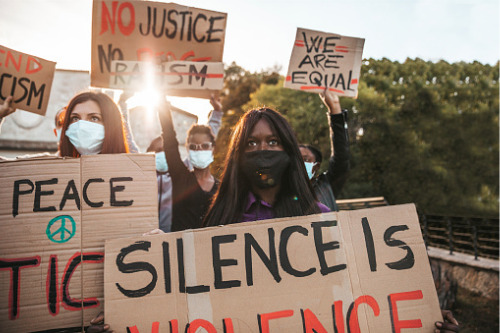

Social movements, such as #MeToo against sexual harassment and Black Lives Matter against racism and police brutality, have undeniably had a profound effect, which extends into the risk management and insurance industry, especially in today’s increasingly litigious society.
In a session at the recent RIMS Live 2020 virtual conference, Sridhar Manyem, director of industry research at AM Best, discussed the effects these movements had on the directors & officers (D&O) insurance market through social inflation.
Manyem defined social inflation as “an increase in loss costs due to increased litigation, broader interpretation of insurance contracts in favor of the plaintiffs, and larger punitive damages.” There is also an increase in “nuclear verdicts” or those exceeding US$10 million in value. These verdicts, Manyem said, are driven by three factors: changing jury demographics, increased sentiment against corporations, and amplification of news in social media.
Other factors contributing to social inflation AM Best observed are an increase in litigation funding as an asset class, and the frequency and severity of class action filings.
According to Manyem, there have been large increases in lawsuits in several markets, most notably in Australia. In fact, the increase in Australia was so drastic that, in May 2020, the government announced it would extend oversight of litigation financing firms by treating them as managed investments firms.
In the US, the states of Wisconsin and West Virginia have also adopted oversight measures.
Social factors have created event-driven litigation.
“Insurers will be watchful of corporations’ policies, history, culture, and controls around disparaging behavior, which not only causes reputational damage, but significant monetary settlements, as the directors and officers have to face protracted agonizing legal processes,” Manyem said.
Companies that have not walked the walk in their commitments to diversity could find themselves embroiled in legal proceedings, especially in states such as California – where there are regulations regarding the diversity of corporations’ boards.
From a high of 427 in 2019, the number of class action suits filed in the United States decreased to 334 in 2020, said Manyem, citing data from Cornerstone Research. The 2020 figure, he said, while still significantly higher than the long-term average, is a welcome relief in terms of prospective loss ratios.
In recent months, the D&O insurance market has often been called a hard market, but Manyem argued that it is still a hardening market.
“According to our definition, a hard market is when a line of business can meet or exceed its cost pf capital,” he said. “We do not think that D&O is completely there yet. We do agree that the rates are hardening and that they are moving in the right direction.”
There was a large increase in written premiums in 2020, compared to previous years, which were stagnant and sometimes saw negative growth. This led reinsurers to look at other risks that appeared better priced.
However, in 2020, large insurers such as AIG, Axis and Everest reported rate increases of over 35%. Manyem noted that the increase in premiums was driven by rate increases and not by exposure increases.
One cause of concern, however, is the increase in direct loss ratios, which is above 60% and 11 points higher than the 10-year average of 55.4%.
“Amid all the doom and gloom, one bright spot appears to be that some established insurers are making their way carefully to take advantage of the hardening market and emergence of some new players such as MGAs that might create capacity for people looking to buy coverage,” Manyem said.
“AM Best’s outlook on the professional liability market remains negative. However, our view on the importance of D&O insurance to marketplace is that it plays a vital part in ensuring competent directors provide adequate and appropriate oversight of their businesses on behalf of their stakeholders. For this oversight to remain in place, D&O insurance is really vital.”
